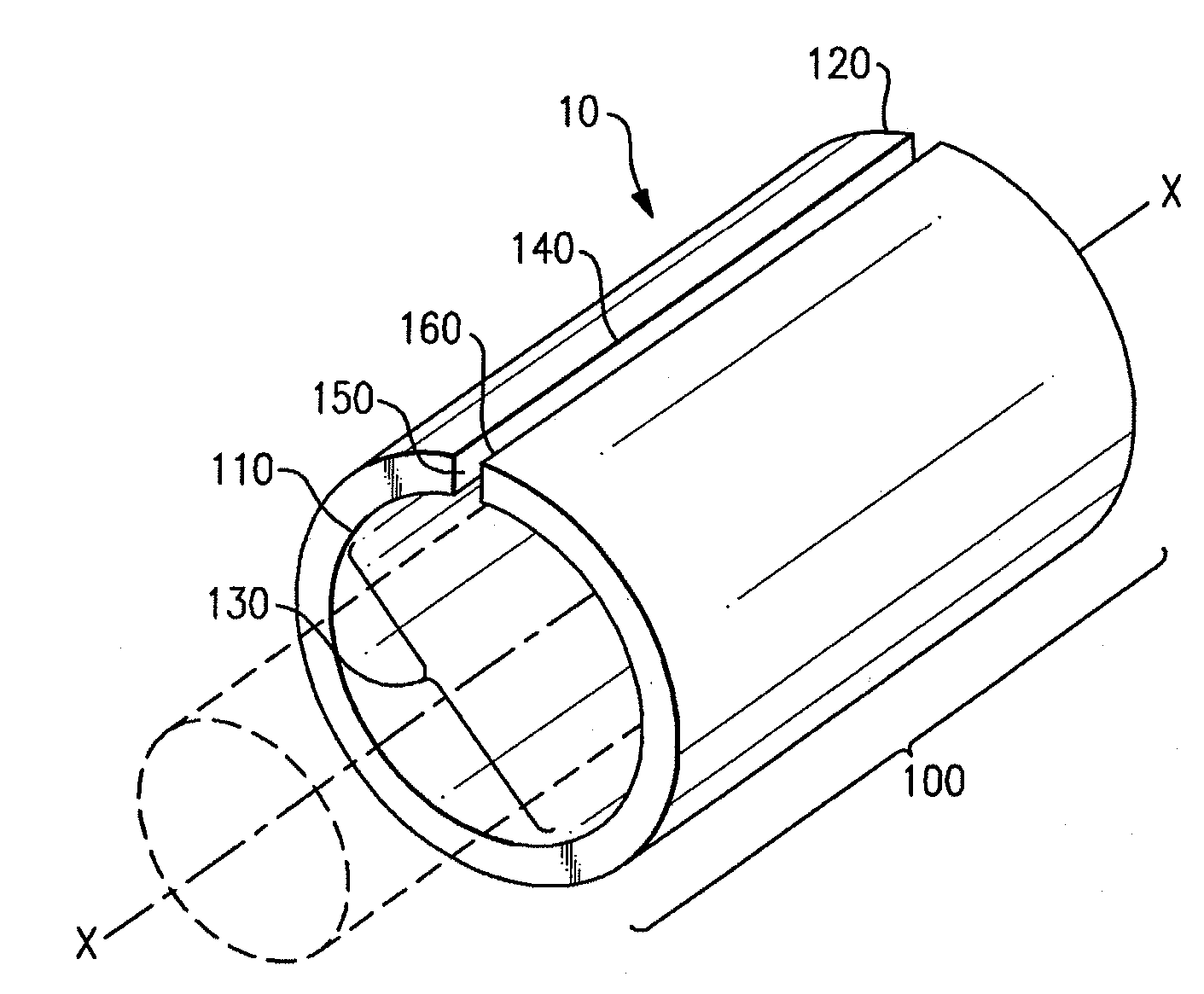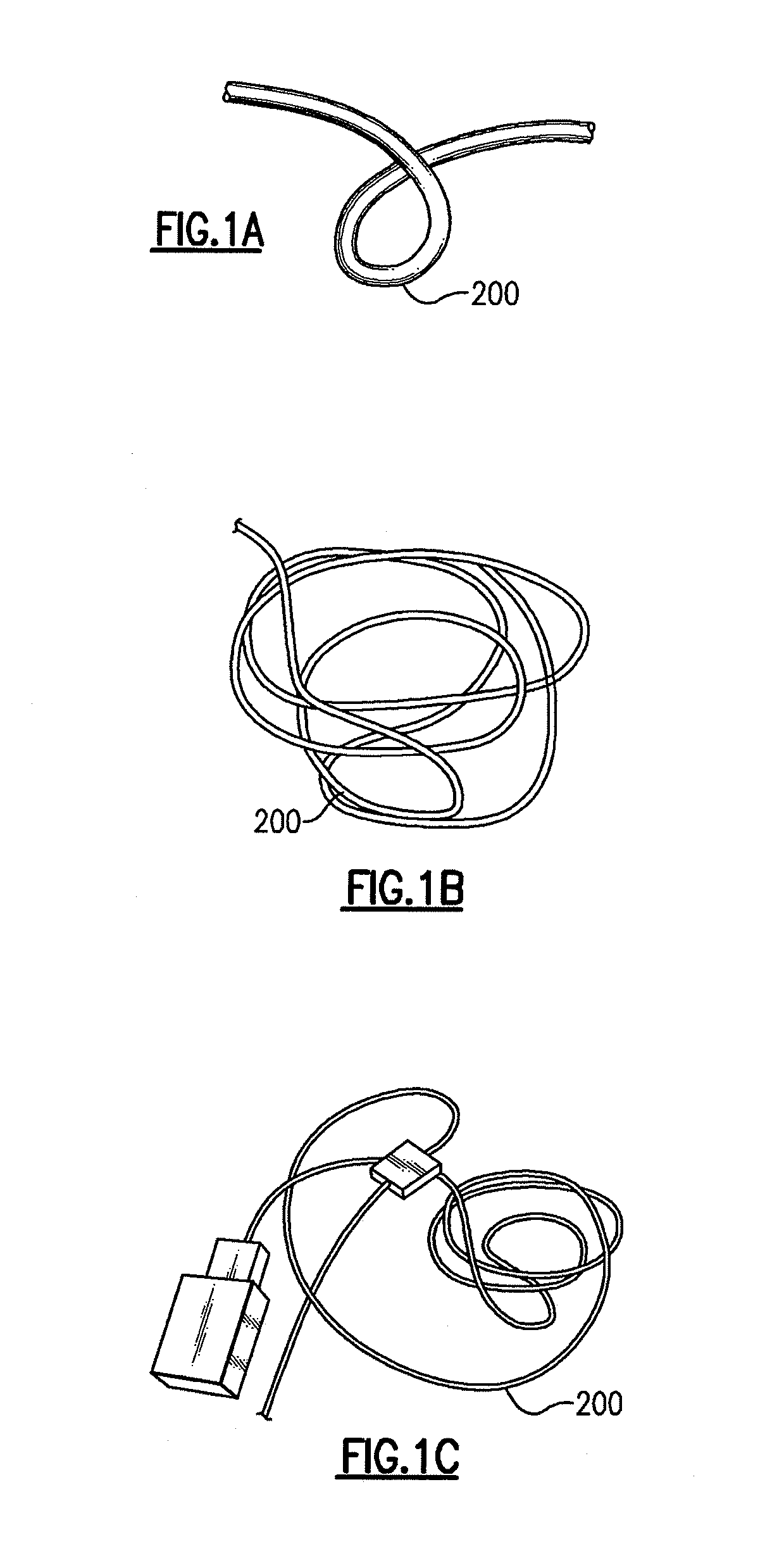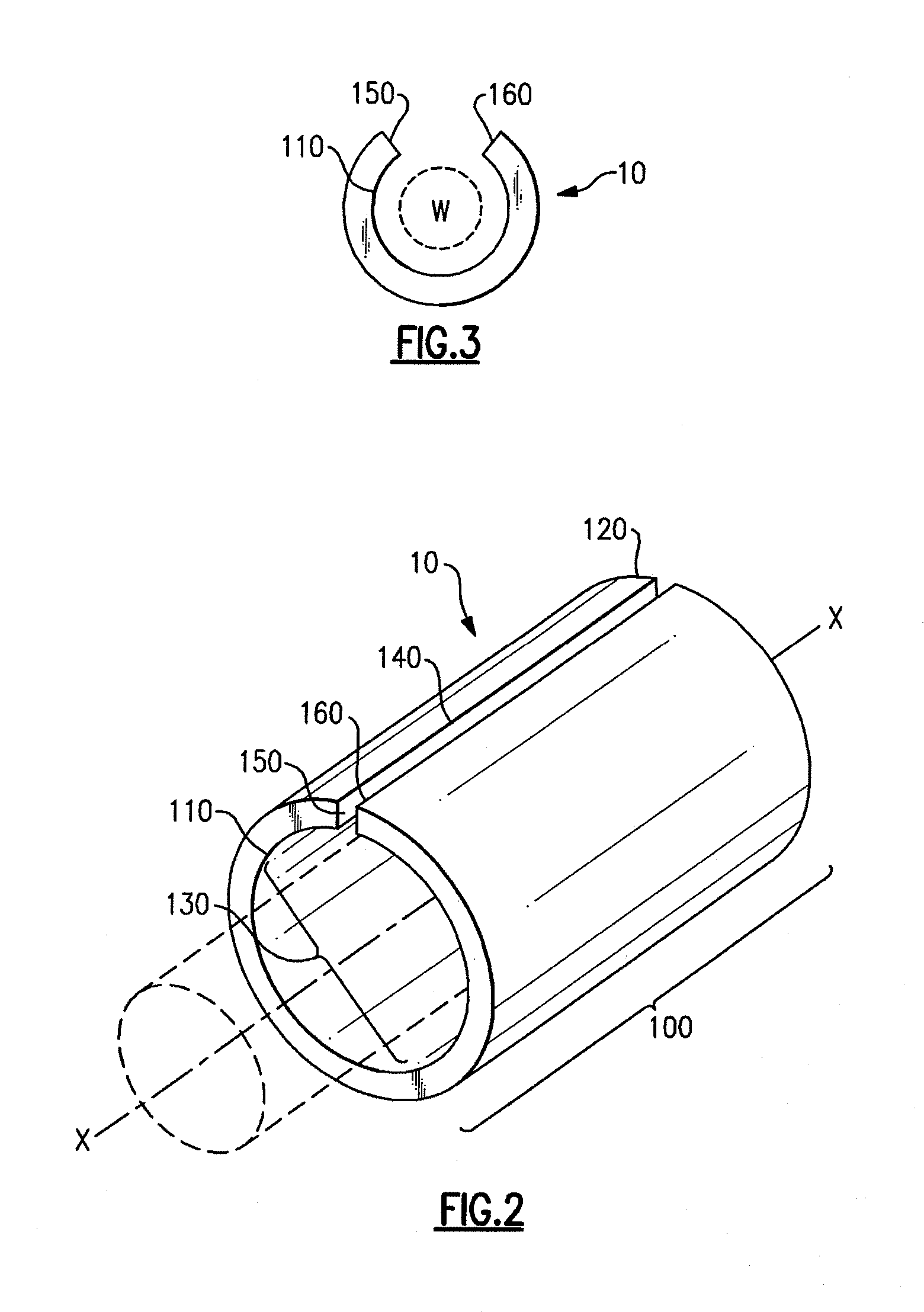Protective Housing For Wires
a protective tubular and wire technology, applied in the direction of insulating bodies, cables, insulated conductors, etc., can solve the problems of deleterious effects of wires, inconvenient tangle, and bending of wires, so as to prevent deleterious bending, crimping, coiling, kinking and other damaging forces, and shorten the effective lifespan of wires and any attached components
- Summary
- Abstract
- Description
- Claims
- Application Information
AI Technical Summary
Benefits of technology
Problems solved by technology
Method used
Image
Examples
Embodiment Construction
[0031]Reference will now be made in detail to the present preferred embodiments of the invention, wherein like reference numerals refer to like components, examples of which are illustrated in the accompanying drawings.
[0032]Turning to FIGS. 1a-1c, uncovered / unprotected wire 200 is shown. These figures show examples of unwanted kinking, bending, coiling, and / or tangling, each of which could cause a short and permanent defect in the wire 200.
[0033]Turning to FIG. 2, a perspective view of a portion of a non-corrugated protective tubular housing for wires 10 according to an embodiment of the present invention is shown. The non-corrugated protective tubular housing for wires 10 comprises a tubular body 100, with a first open end 110 and a second open end 120 (not fully shown), a hollow volume 130, and a slit 140 which extends along the longitudinal axis X-X and over the length of the tubular body 100 between the first open end 110 and second open end 120.
[0034]Turning to FIG. 3, a plan ...
PUM
 Login to View More
Login to View More Abstract
Description
Claims
Application Information
 Login to View More
Login to View More - R&D
- Intellectual Property
- Life Sciences
- Materials
- Tech Scout
- Unparalleled Data Quality
- Higher Quality Content
- 60% Fewer Hallucinations
Browse by: Latest US Patents, China's latest patents, Technical Efficacy Thesaurus, Application Domain, Technology Topic, Popular Technical Reports.
© 2025 PatSnap. All rights reserved.Legal|Privacy policy|Modern Slavery Act Transparency Statement|Sitemap|About US| Contact US: help@patsnap.com



